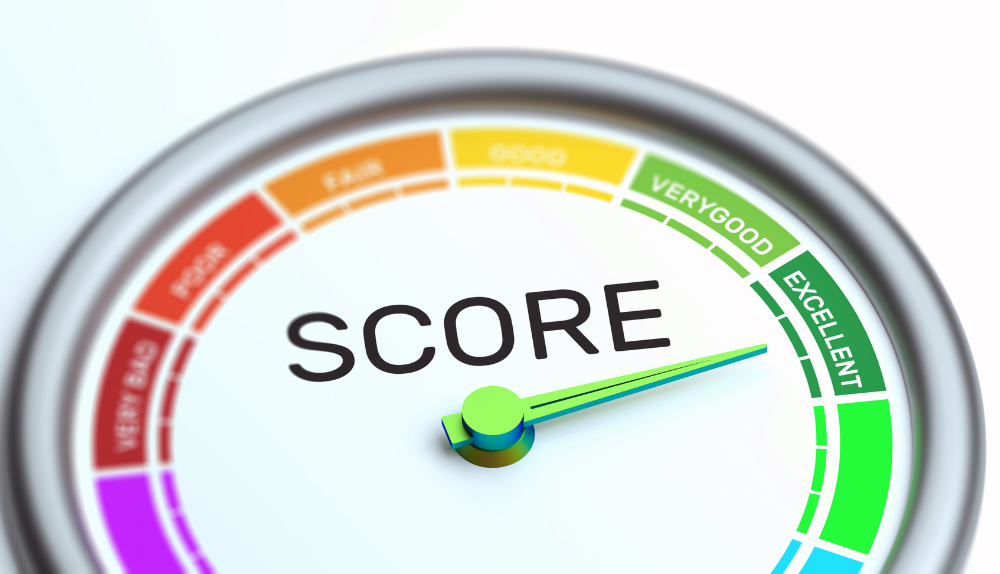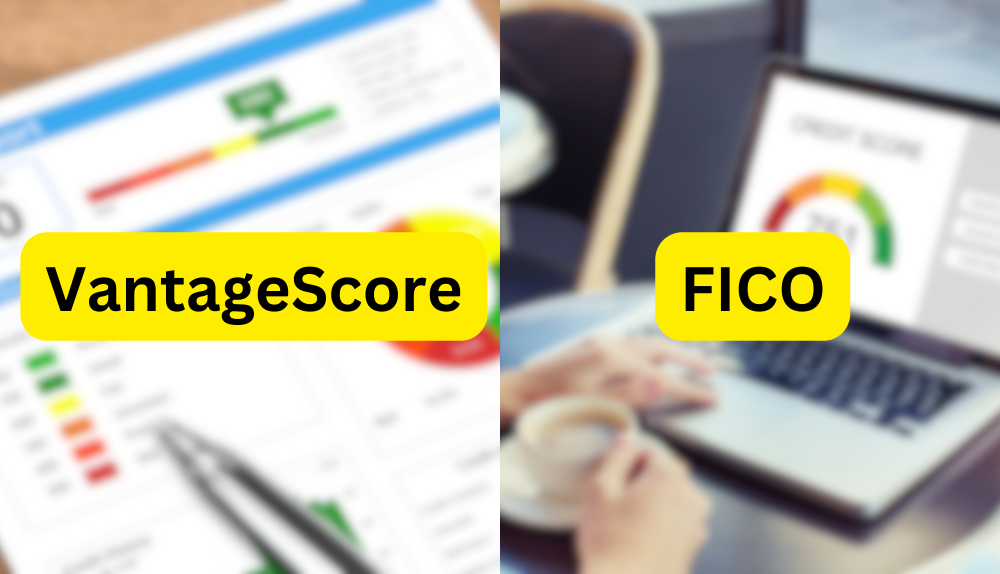
By max June 9, 2023
Banks, financial institutions, private lenders, and landlords need proof of your creditworthiness before they accept your loan request. You may have heard of the FICO score, which is widely used to determine your credibility in numerical terms. Well, the VantageScore is the competitor of FICO and is used for the same purpose.
The factors used to calculate the score are different in both, though. Knowing both scores will help you better evaluate your creditworthiness and monitor the metrics that may fluctuate the score over time. For businesses applying for a merchant account or a business loan, the FICO and VantageScore matter a lot. Keep reading to learn more about the VantageScore, its purpose, how it is calculated, etc.
What is a VantageScore?
Developed by the three biggest credit bureaus—Experian, TransUnion, and Equifax, VantageScore is a unique credit scoring model. It had a different scoring scale previously, but the latest edition, i.e. VantageScore 3.0 has the same credit scoring scale as FICO.
It calculates your creditworthiness on a scale of 350 to 800. You can collect your VantageScore for free, making it one of the best choices for borrowers planning to apply for credit. The score is also useful for lenders that need to determine the borrower’s credibility before lending them money. The factors that affect your FICO score also affect your VantageScore. Let’s explore the different VantageScore editions that have launched so far.
VantageScore 4.0
VantageScore 4.0 is the most recent version of this credit scoring model. The system is updated with new factors that may affect your creditworthiness, including utility payments and telecom bills.
Some notable changes have been made in the algorithm to ensure that customers’ credit scores are calculated accurately. The latest update uses machine learning to factor in the user’s credit usage and history. Despite all the perks, the model is not used as widely as the 3.0 version.
VantageScore 3.0
VantageScore has been updated many times since it was launched. The 3.0 version is the perfect example of several updates in this credit scoring model. The most popular update was the shift from the letters & numbers system to the number-only scoring model. The system considers the credit history of the user over time instead of a specific payment.
VantageScore 2.0
This 2008 version of VantageScore was introduced in 2008 and had the letter and number scoring system. It would calculate your credit score in the range of 501 and 990 and grade level A-F.
Since its inception, VantageScore has been updated four times and each version introduced a major update in the score calculation. Version 3.0 launched in 2013 is the most popular among lenders and borrowers since it allows people to get an accurate credit score with limited credit records.
VantageScore Range
The VantageScore range is similar to the FICO range and has the same scoring model as the latter. It’s obvious that a higher VantageScore implies better credit history and a good chance the borrower will repay the loan. Its current score range is between 300 and 850. A score between 781 and 850 is considered excellent.
Borrowers who tend to pay their loans, utility bills, telecom payments, and credit bills on time fall into this category. The VantageScore between 661 and 780 is considered good and from 601 to 660 is fair. If the score falls below 660, it will be either poor or very poor, both of which mean lenders will be hesitant to lend you money.
Your VantageScore must be at least in the “good” category for you to secure a loan easily. Those falling into the fair or poor category might face difficulty finding a reliable lender. The worst part is banks that are willing to extend loans to such borrowers will impose a high-interest rate just to mitigate the risk.
Factors Affecting Your VantageScore
VantageScore is based on an algorithm that considers different factors to determine your creditworthiness. Remember, the on-time utility bill payment or loan repayment won’t push your VantageScore to “excellent”.
There are other factors that matter. Besides, the scoring model focuses more on the long-term credit usage record than a single payment. Although the exact algorithm of this scoring model is unknown, a few common factors that affect credit scoring systems are listed below.
Your Payment History
The highly influential factor in calculating your credit score is your payment history. If you pay your utility bills timely, know that it’s going to have a significant impact on your VantageScore.
It’s believed that up to 40% of your credit score is calculated based on your payment history. So, missed or delayed payments in your credit history will appear as red flags to the lenders.
Credit Utilization
Credit utilization percentage refers to the total credit you have used versus your credit limit. Suppose your credit limit is $4000 and you have used $2000. In this case, your credit utilization would be 50%, which is considered a bit higher than what lenders consider good. Try to keep it below 30% to leave a good impression on the lender.
Age and Credit Type
The biggest difference between VantageScore and FICO is the age of your credit accounts. In FICO, it is highly influential and can be the determining factor in the acceptance or rejection of your loan request. The age of accounts is the number of years you have a credit account.
Lenders prefer borrowers with long-term credit accounts, a good credit history, and low balances. It matters in VantageScore too, but it is comparatively less influential than that in the FICO score. The diversity of your credit also affects your VantageScore. For this reason, it is advisable to keep your credit accounts open even if you don’t use them frequently.
Total Balance
Around 11% of your VantageScore calculation is based on your due credit bills. To keep your score good, pay your credit bills as soon as possible. Your available credit matters too. It is the total credit you have minus the amount you have used. It’s the available balance. In the above example, you have a credit limit of $4000 and you used $2000. So, you have an available balance of $2000. To increase this limit, consider applying for an increased credit limit or opening a new credit line.
Recent Credit Usage
As mentioned earlier, your recent credit behavior doesn’t matter much in calculating the VantageScore, but it does impact the final score. For instance, conducting a hard credit check can lower your credit score. Likewise, applying for new loans might negatively affect your credit usage. It’s best to avoid both, especially if you are planning to get a home loan, personal loan, or auto loan in the future.
More such factors can affect your VantageScore. You can check your current credit score on lending or non-lending platforms. American Express, for instance, allows borrowers to check their VantageScore. Capital One, U.S. Bank, and many such lending platforms offer free VantageScore calculation services.
How is VantageScore Different from FICO?

VantageScore and FICO share the same scoring model. The scores are calculated between 300 and 850. Lenders might consider one of these or both credit score systems to identify your credibility. It’s best to check both and keep your score at a good or excellent level to get a loan easily.
FICO has been in the market since 1989 and is, therefore, the most commonly used credit score check system among lenders and borrowers. VantageScore, on the other hand, was launched recently in 2007. Both systems follow the three major credit card bureaus when generating credit scores for users.
The most notable difference between FICO and VantageScore is that the former takes the loan you have recently applied for and other small credit-related activities into consideration. VantageScore calculates the score based on your financial performance and credit history over time, instead of a single bill. This is quite helpful for lenders that want to look at the bigger picture to determine the borrower’s credibility.
How to Improve Your VantageScore?

There is a lot you can do to improve your credit score, but a few things will help better your VantageScore in particular. Here’s what can help.
- Try to have a diverse variety of financing, such as auto loans, credit cards, and installment loans.
- Keep your credit card accounts open even if they are not required anymore.
- Do not request a hard credit inquiry frequently.
- Pay your utility and card bills on time.
- Request a soft credit inquiry and watch out for any errors. File a dispute immediately to improve your credit score.
- Maintain a credit utilization ratio below 30%.
- Do not apply for different loans simultaneously.
Bottom Line
Businesses planning to open a merchant account or those applying for business loans must keep their VantageScore above 700 to secure a loan easily. A good credit score improves your chances of getting credit from any bank at a nominal interest rate.
